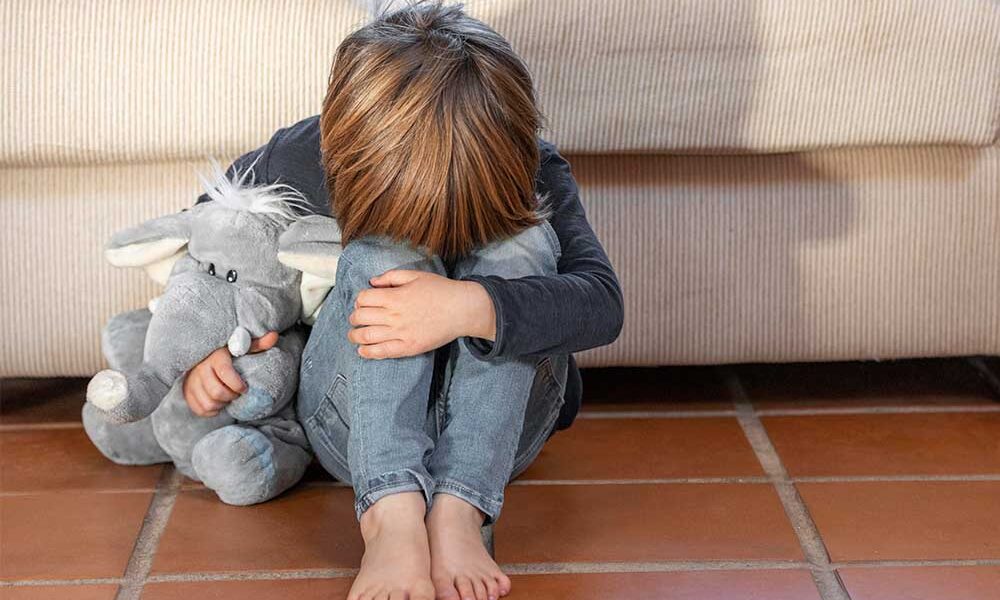Separation anxiety in kids is a common phenomenon that many families face. As parents, we understand that leaving our young ones behind can be a challenging and emotionally charged experience. This guide aims to provide valuable insights into various aspects of separation anxiety, including leaving toddlers for extended periods. We understand the concerns you have, and we’re here to offer guidance on navigating through this journey.
“How lucky I am to have something that makes saying goodbye so hard.”
A.A. Milne, British author (Winnie-the-Pooh)
Table of Contents
- Babies Don’t Keep – What Does It Mean
- What is Separation Anxiety?
- Signs and Symptoms
- Causes of Separation Anxiety
- Impact on Children
- Family Away from Family: Understanding the Meaning
- Out of Sight, Not Out of Mind: A Parent’s Guide
- Leaving an 18-Month-Old for a Week: Tips for a Smooth Transition
- Leaving a Toddler for a Week: Navigating the Emotional Landscape
- How to Handle Separation Anxiety
- Creating a Supportive Environment
- Professional Help and Intervention
- Tips for Parents
- Conclusion
Dealing with a child’s separation anxiety can be a challenging experience for parents. Children, especially toddlers and preschoolers, often experience intense distress when separated from their primary caregivers. In this guide, we will delve deep into the world of separation anxiety, understanding its underlying causes, recognizing its signs and symptoms, and learning effective strategies to help your child cope.
Babies Don’t Keep – What Does It Mean
“Babies don’t keep” is a phrase often used to convey the idea that the time when someone has a baby or young child is fleeting and temporary. It serves as a reminder that babies grow up quickly, and the precious moments of their infancy and early childhood will pass swiftly. The phrase suggests that parents should cherish and make the most of these early years because they won’t last forever. It’s a reflection on the fleeting nature of time and the importance of appreciating and enjoying each stage of a child’s development.
What is Separation Anxiety in Kids?
Separation anxiety is a normal developmental phase that most children experience. It typically begins around 6 to 8 months of age and can persist throughout the early childhood years. During this phase, children exhibit strong emotional reactions when separated from their parents or caregivers. These reactions can range from clinginess and crying to physical symptoms like stomachaches or headaches.
Signs and Symptoms of Separation Anxiety in Kids
Recognizing the signs of separation anxiety is crucial for effective intervention. Some common symptoms include:
- Excessive Clinging: Children may be reluctant to leave their parent’s side or may have difficulty participating in activities independently.
- Refusal to Attend School: School-aged children might resist going to school or complain of feeling unwell to avoid separation.
- Nighttime Distress: Separation anxiety can manifest at bedtime, with children fearing being alone in their room.
- Physical Symptoms: Stomachaches, headaches, and even nausea can occur due to heightened anxiety.
Causes of Separation Anxiety in Kids
Understanding the causes of separation anxiety is essential. It often stems from a child’s growing awareness of their dependence on caregivers and their inability to fully comprehend time and distance. Major life changes such as starting school, moving to a new place, or experiencing a family disruption can trigger or exacerbate separation anxiety. Here are some causes of separation anxiety;
1. Developmental Stage:
Separation anxiety is a natural developmental stage that typically begins around 6 to 8 months of age. As children become more aware of their surroundings and relationships, they start to form strong attachments to their primary caregivers. The fear of being separated from these caregivers can trigger anxiety.
2. Attachment:
A secure attachment between a child and their primary caregiver is essential for healthy emotional development. When a child has developed a strong bond with their caregiver, they may experience separation anxiety when that caregiver is not present.
3. Change in Routine:
Sudden changes in routine, such as starting school, moving to a new place, or having a change in caregivers, can trigger separation anxiety. Children thrive on predictability and familiarity, and significant disruptions to their routines can lead to feelings of insecurity.
Read Simple Daily Routine Tips for Kids [Busy Mom Guide]
4. Parental Reactions:
Children are highly attuned to their caregivers’ emotions and reactions. If a parent or caregiver displays anxiety or distress during separations, the child is more likely to pick up on these cues and feel anxious.
Read How to Promote Positive Discipline in Your Home
5. Fear of the Unknown:
Children often struggle with understanding concepts like time and distance. When a parent or caregiver leaves, young children might not fully grasp the concept of their return. This fear of the unknown can contribute to their anxiety during separations.
Impact of Separation Anxiety on Kids
The effects of separation anxiety can be overwhelming for both the child and the parent. Children might develop a sense of insecurity, which could potentially affect their social interactions and overall emotional well-being. Parents, on the other hand, might struggle with feelings of guilt and helplessness.
#1. Emotional Distress:
Children experiencing separation anxiety often feel intense emotional distress when separated from their primary caregivers. This distress can manifest as crying, clinginess, and even panic attacks. The emotional turmoil can be overwhelming for the child, leading to feelings of fear and helplessness.
#2. Social Withdrawal:
Children with separation anxiety may avoid social interactions or new situations. They might become more reserved or hesitant to engage with their peers, as the fear of being away from their caregivers can hinder their ability to explore and interact with others.
Read Outdoor Activities for Toddlers [How to Facilitate your Toddler’s Development]
#3. Academic Challenges:
For school-age children, separation anxiety can interfere with their academic performance. They might have difficulty focusing in class, participating in group activities, or attending school regularly. The anxiety about being separated from their parents can overshadow their ability to engage in learning.
#4. Sleep Disruptions:
Separation anxiety can extend to bedtime, leading to difficulties falling asleep or staying asleep throughout the night. Children might experience nightmares or night sweats related to their fears of being alone.
#5. Physical Symptoms:
The stress and anxiety caused by separation anxiety can sometimes manifest as physical symptoms. Children might complain of stomachaches, headaches, or even nausea when faced with separation from their caregivers.
#6. Dependency:
Excessive separation anxiety can lead to increased dependency on caregivers. Children might rely heavily on their parents for emotional reassurance and comfort, even in situations where their peers are becoming more independent.
#7. Parental Stress:
The child’s distress can also impact parents or caregivers. They might experience feelings of guilt, frustration, and helplessness when their child displays severe separation anxiety. This can strain the parent-child relationship and add stress to the family dynamic.
Raed Balancing Work and Family [10 Tips for Busy Moms]
#8 Limiting Opportunities:
Children with separation anxiety might miss out on various opportunities for growth and development. They might avoid trying new activities, attending playdates, or participating in extracurricular activities due to their fear of separation.
Family Away from Family: Understanding the Meaning
Leaving your child behind, whether it’s for a short business trip or an extended vacation, can trigger separation anxiety. Your child’s perception of family becomes synonymous with security and comfort, and any separation can lead to feelings of fear and distress. It’s crucial to recognize that these emotions are a natural response to unfamiliar situations.
Out of Sight, Not Out of Mind
Leaving your child for an extended period requires thoughtful preparation and clear communication:
1. Choose Trusted Caregivers: Ensure that those looking after your child are experienced and trustworthy.
2. Discuss the Separation: Talk to your child about the upcoming separation in a simple and age-appropriate manner.
3. Create a Countdown: Mark the days leading up to your return on a calendar to help your child visualize the time frame.
Leaving an 18-Month-Old for a Week: Tips for a Smooth Transition
Leaving your 18-month-old for a week can be especially challenging. At this age, toddlers are developing a stronger attachment to their primary caregivers and the home environment. To ensure a smooth transition, consider these tips:
1. Gradual Introductions: If possible, arrange short separations beforehand to help your child become accustomed to your absence.
2. Familiar Faces: Having a familiar relative or caregiver around can provide comfort and a sense of security.
3. Maintain Routine: Stick to your child’s daily routine as closely as possible to create a sense of familiarity.
Leaving a Toddler for a Week: Navigating the Emotional Landscape
Toddlers are incredibly perceptive and can pick up on emotional cues from their caregivers. When leaving a toddler for a week, it’s important to manage your own emotions and provide reassurance:
1. Stay Positive: Display confidence and excitement about their upcoming adventures, emphasizing that you’ll be back soon.
2. Comfort Items: Leave behind a beloved toy or blanket that can offer comfort and a sense of your presence.
3. Regular Communication: Utilize technology to stay connected through video calls or sharing photos to remind them that you’re thinking of them.
Leaving a 2-Year-Old for 4 Days: Strategies for Success
Leaving a 2-year-old for an extended period can be a mix of emotions for both parents and children. Here’s how you can make the experience less daunting:
1. Practice Separation: Engage in short separations to help your child build confidence in your return.
2. Engage in Play: Leave behind engaging activities or crafts that your child can enjoy in your absence.
3. Reassure Them: Explain your absence in simple terms and reassure your child that you will be back soon.
How to Handle Separation Anxiety in Kids
Handling separation anxiety requires patience, understanding, and consistent efforts. Here are some strategies to consider:
- Gradual Separation: Start with short separations and gradually increase the duration to help the child adapt.
- Predictable Routine: Children thrive on routine. Establishing a predictable daily schedule can provide a sense of security.
- Comfort Objects: Allowing your child to have a special toy or comfort item can offer reassurance during separations.
- Positive Goodbyes: Keep goodbyes short and positive. Assure your child that you’ll be back soon.
- Stay Calm: Your own emotional state can impact your child’s anxiety. Stay calm and composed during separations.
Creating a Supportive Environment
Creating a supportive environment is crucial in helping your child overcome separation anxiety. This involves:
- Open Communication: Encourage your child to express their feelings and fears about separation.
- Empathy: Validate your child’s emotions and let them know that it’s okay to feel scared or anxious.
- Building Trust: Foster a sense of trust by keeping your promises and consistently returning as promised.
Professional Help and Intervention
In some cases, professional help might be necessary. Child psychologists or therapists with expertise in child anxiety can provide guidance and strategies to manage separation anxiety effectively.
Tips for Parents
As parents, you play a significant role in helping your child navigate through separation anxiety. Here are some additional tips to keep in mind:
- Lead by Example: Show your child that separations are temporary and that you trust them to manage on their own.
- Encourage Independence: Gradually encourage your child to engage in activities that promote independence.
- Celebrate Achievements: Praise your child for successfully coping with separations. Positive reinforcement goes a long way.
Final Thoughts on Separation Anxiety in Kids
Navigating separation anxiety in kids requires patience, understanding, and a strategic approach. As parents, we recognize the challenges you face when leaving your little ones behind. By following these tips and guidelines, you can make the separation smoother for both you and your child.
Remember, separation anxiety is a natural phase of development, and with the right support and preparation, you can help your child build resilience and adaptability. Your child’s emotional well-being is our priority, and we’re here to guide you every step of the way.



